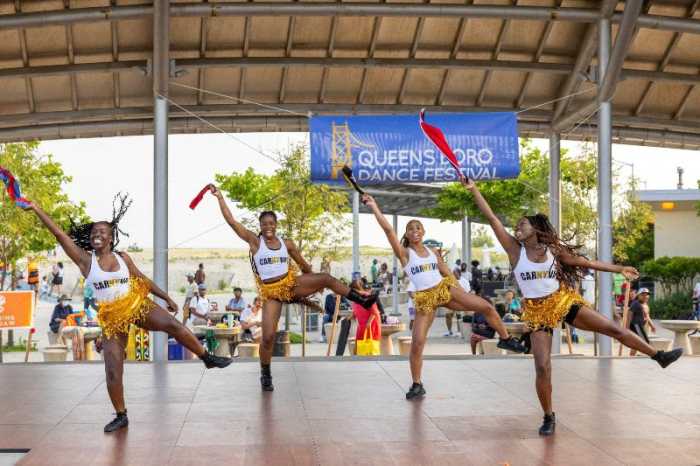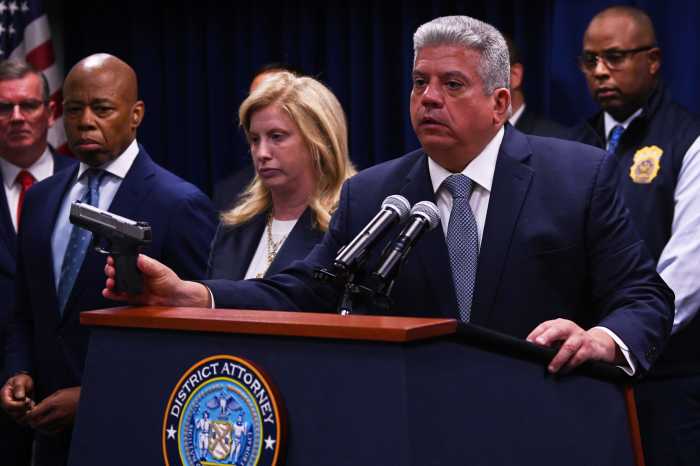Agency Compelling Landlords To Fix Woes
Six Bushwick apartment houses considered to be in deteriorating condition have been added to the second Department of Housing Preservation and Development (HPD) “at-risk list” and will be targeted for proactive measures to bring the buildings up to code, it was announced.
Approximately 134 buildings across the city were added to the second list through the Proactive Preservation Initiative (PPI), in which the HPD identifies multi-family buildings which are at risk of falling into such disrepair that it threatens the safety and well-being of its residents and the surrounding community.
Eighteen buildings on the first “at-risk list” announced last summer have been discharged after the owners conducted repairs which closed more than 80 percent of housing maintenance code violations. However, 39 buildings on the registry last year were carried over into this year’s list, which includes 95 new locations.
“Identifying and getting into buildings before they hit a severe level of distress is critical to protecting our tenants and the surrounding neighborhoods,” said Deputy Mayor for Economic Development Robert K. Steel in an announcement of the new list last Wednesday, Mar. 21. “Holding owners accountable and stopping decline at an early age, simply put, saves the city and taxpayers money that would likely have to be spent to stabilize these buildings later down the road.”
“Looking at the numbers, we can say that PPI is bringing us great results. But there’s more to it than that,” added HPD Commssioner Mathew M. Wambua. “Our Proactive Initiative is a holistic approach to getting buildings back on a healthy track and to encourage their owners to act re- sponsibly to avoid the sort of systemic distress that leads to disinvestment and decay.”
The 134 buildings on this year’s list were selected through bi-annual data analysis and site inspections conducted by HPD Division of Neighborhood Preservation staff. Among the data reviewed by HPD staff included complaints filed by tenants, outstanding tax or water arrears, foreclosure rates in neighborhoods, outstanding housing code violations and information submitted by local elected officials, civic associations and housing advocates.
Of the over 500 buildings reviewed during the first year, 152 structures were referred to the Proactive Enforcement Bureau (PEB) full “roof-to-cellar” inspections or to the HPD Housing Litigation Division (HLD) to remedy distressed or severely deteriorated conditions observed at each location.
Upon completing their full inspections, PEB members can issue additional violations to the owners, who then have 45 days to correct the newly issued violations. After that period of time, PEB will again inspect the site and, depending on the remedial action taken by the owner, may add the location to the “at-risk list.”
HLD can automatically add a building to the “at-risk list” and launch legal action compel property owners to make the necessary repairs.
While 18 of the buildings on the first PPI “at-risk list” were discharged, those which were added from last year’s tally to this year’s registry are showing signs of improvement; according to the HPD, the remaining structures averaged a 56 percent decrease in the number of outstanding housing code violations.
Among the data reviewed by HPD staff included complaints filed by tenants, outstanding tax or water arrears, foreclosure rates in neighborhoods, outstanding housing code violations and information submitted by local elected officials, civic associations and housing advocates.
If a homeowner is financially incapable of making the necessary repairs, the HPD can step in to work with lenders to help negotiate a change in ownership. Low-interest rehabilitation loans are also available to property owners who can demonstrate a “good faith effort” to correct the problems found.
The following buildings were added to the PPI list between August 2011 and February of this year:
– 1136 Jefferson Ave., a six unit building first inspected on June 20, 2011, in which 56 violations were found. As of Feb. 29, 23 violations were spotted, a decrease of 59 percent.
– 19 Linden St., a six-unit building inspected on Sept. 14, 2011, during which 51 violations were found. As of Feb. 29, 27 violations were reported, a 47 percent decrease.
– 1134 Willoughby Ave., a sixunit building first inspected on Dec. 2, 2011, during which 26 violations were found. As of Feb. 29, 23 violations were tallied, a decrease of 12 percent.
– 1345 Bushwick Ave., a six-unit building inspected on June 21, 2011, during which 68 violations were found. As of Feb. 29, 62 violations remain outstanding, a nine percent decrease. The building has been referred to the HLD for further legal action.
– 1218 Bushwick Ave., a sevenunit building inspected on Sept. 15, 2011, during which 114 violations were found. That number dropped to 104 violations as of Feb. 29, accounting for a nine percent decrease.
– 879 Knickerbocker Ave., a 10- unit building inspected on Sept. 15, 2011, during which 76 violations were found. Approximately 79 violations were recorded on the property as of Feb. 29, a four percent increase. The building has been referred to the HLD for further legal action.
Four additional Bushwick apartment houses were directly referred to the HLD for litigation:
– 1122 Willoughby Ave., a sixunit building in which 56 violations were found (the case was filed on Dec. 5, 2011);
– 196 Stockholm St., a six-unit building in which 43 violations were found (the case was filed on Nov. 17, 2011);
– 504 Wilson Ave., a six-unit building in which 68 violations were found (the case was filed on Nov. 2, 2011, and the building is also in HPD’s Alternative Enforcement Program); and
– 170 Wilson Ave., a six-unit building in which 101 violations were found (the case was filed on Sept. 19, 2011).


































